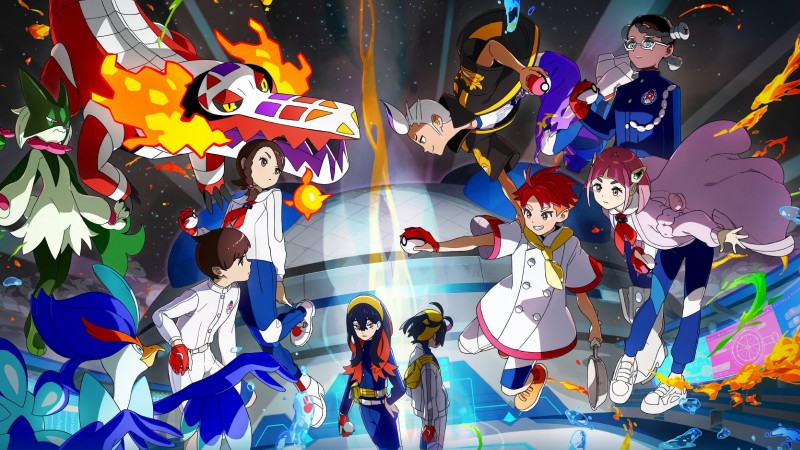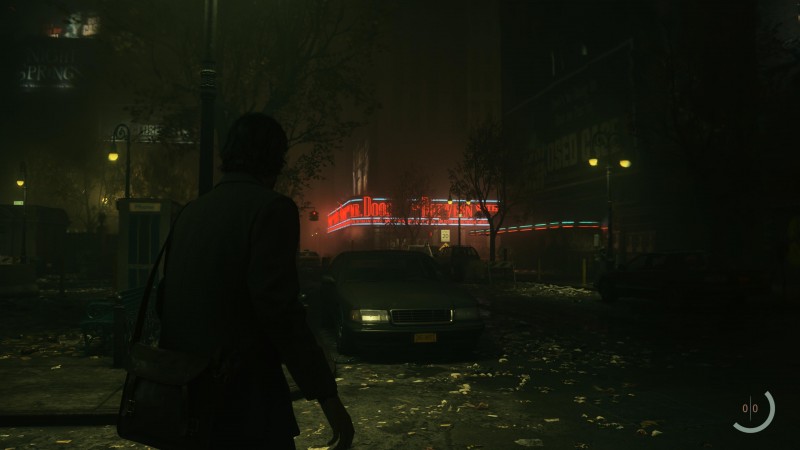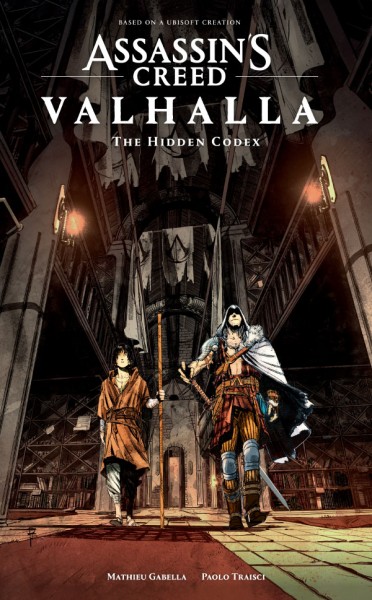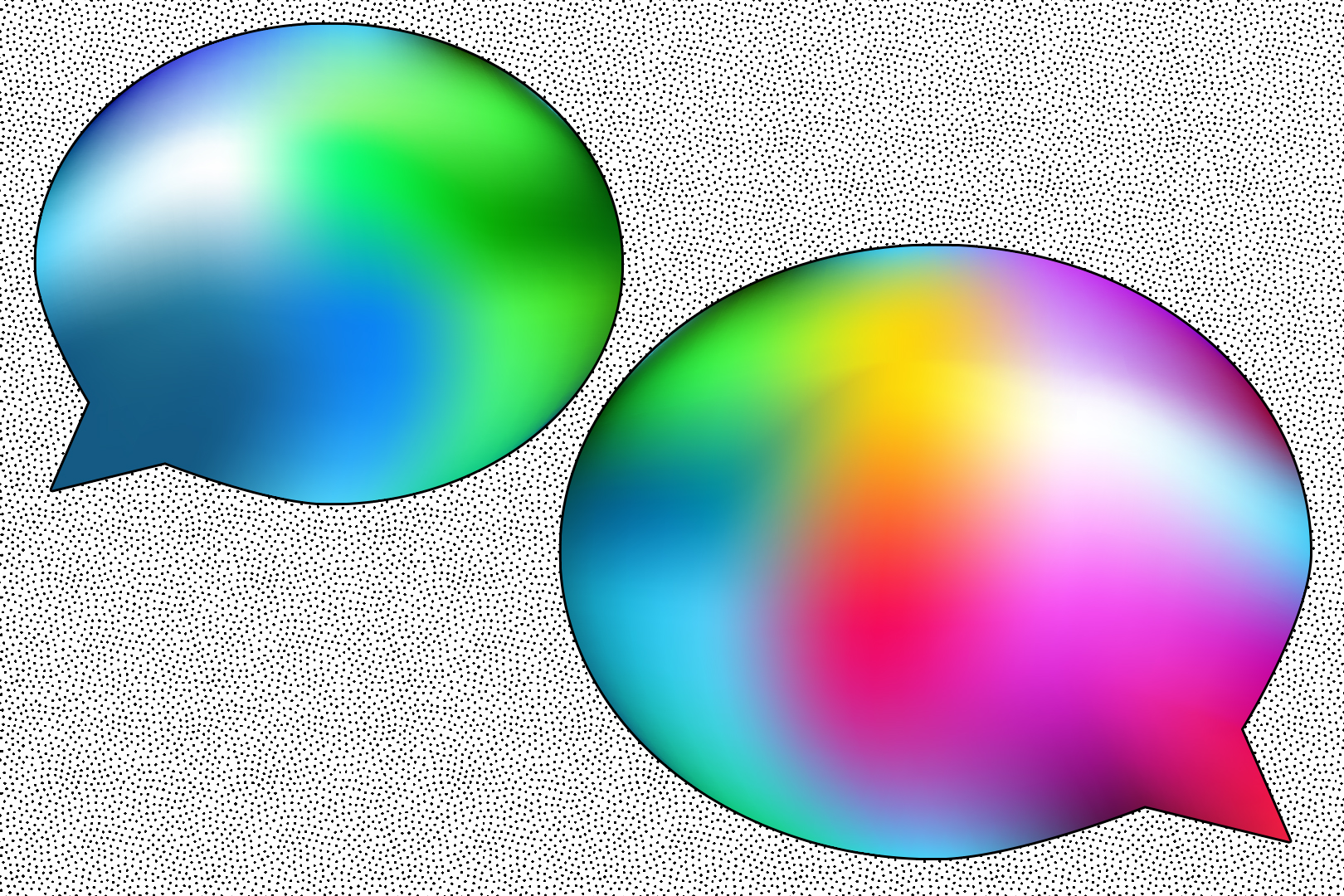Ryan has over 15 years of diverse technology and product development leadership experience from early-stage startups to Fortune 100 organizations. As the Chief Product Officer at CallRail he leverages his passion for developing best in class technology solutions to solve real-world problems. Prior to joining CallRail,…
Dell, Intel and University of Cambridge deploy the UK’s fastest AI supercomputer
Dell, Intel, and the University of Cambridge have jointly announced the deployment of the Dawn Phase 1 supercomputer. This cutting-edge AI supercomputer stands as the fastest of its kind in the UK today. It marks a groundbreaking fusion of AI and high-performance computing (HPC) technologies, showcasing…
Pokémon Scarlet And Violet Indigo Disk DLC Out Next Month

Back in August, a Pokémon Presents revealed that the first part of Pokémon Scarlet and Violet’s DLC, collectively known as The Hidden Treasure of Area Zero, would hit the game in September. That has since come and gone, with players eagerly awaiting the second part of this expansion. And now, the official Pokémon Twitter account has revealed The Indigo Disk DLC goes live next month.
[embedded content]
More specifically, The Hidden Treasure of Area Zero Part 2: The Indigo Disk hits Pokémon Scarlet and Violet on December 14. As those keeping up with Game Freak’s ninth generation of Pokémon know, The Indigo Disk brings players to Blueberry Academy, which is actually in the Unova region, rather than the Paldea region where Pokémon Scarlet and Violet take place. The Unova region is the setting for Pokémon Black and White, and their sequels, Pokémon Black 2 and White 2.
Many players are speculating that The Indigo Disk will, in some way, tease remakes of the fifth generation of Pokémon, as those are next in line for Game Freak’s cadence of remaking previously released Pokémon games. With players leaving Paldea to check out an academy in Unova, many predict some hint at potential Pokémon Black and White remakes await trainers. But only time will tell.
Pokémon Scarlet and Violet: The Hidden Treasure of Area Zero Part 2 – The Indigo Disk hits the games on December 14. The DLC can be purchased as a pack for $34.99.
For more, read about how after The Indigo Disk is out, every starter Pokémon will be available in Pokémon Scarlet and Violet, and then read Game Informer’s Pokémon Scarlet and Violet review.
Are you hopping into The Indigo Disk next month? Let us know in the comments below!
Customer adoption of Amperity for paid media soars to over 50%
Amperity, the leading AI-powered enterprise customer data platform (CDP) for consumer brands, today announced that more than 50% of its customer base has adopted Amperity for Paid Media. The rapid adoption of this new application of Amperity demonstrates the important role first-party data will play in…
Former World Of Warcraft, League Of Legends Lead Greg Street Reveals New Studio And MMO Codenamed ‘Ghost’
Greg Street, a former lead systems designer on Blizzard’s World of Warcraft and executive producer on Riot Games’ League of Legends MMO still in development, and NetEase Games have announced a new studio called Fantastic Pixel Castle. This studio is developing a new AAA MMO codenamed Ghost, set in a new fantasy universe. Street is joined by a founding team with decades of MMO and related genre experience ranging from World of Warcraft, League of Legends, Guild Wars 2, Fortnite, Overwatch, and Valorant, according to a press release.
[embedded content]
The studio is hiring and says it embraces a “remote-first structure.” It is currently fully remote. Alongside today’s news, Fantastic Pixel Castle has released three pieces of Ghost concept art and you can check each out by swiping through the gallery below:
“With Fantastic Pixel Castle and Ghost, we want to demonstrate our commitment to open communication and development in front of players,” Street, who is the studio’s lead, writes in a press release. “MMOs are arguably one of the most challenging games to make, but we have some big advantages. We are a fully remote studio, allowing us to hire the best game developers, and we plan to stay small so that we can iterate on our design quickly. We also want to show the game early and often to the community and make sure we are on the right track to incorporate constant feedback. This is possible because NetEase Games is a strategic partner that understands our vision, and gives us the creative autonomy, resources, and support to be successful.”

Fantastic Pixel Castle studio lead Greg Street
NetEase Games president of global investments and partnerships says Fantastic Pixel Castle is bringing some of the best MMO talent available to NetEase to develop this original fantasy IP, noting that the studio has the company’s full support “to make this vision a reality.”
Fantastic Pixel Castle’s studio leaders will share more about the team and Ghost during a livestreamed AMA set for 2 p.m. ET on November 8, and the team encourages those interested in the idea of this game to check out the studio’s website for more information.
What do you hope to see from this MMO? Let us know in the comments below!
Alan Wake 2’s Biggest Update Yet Includes Fixes For Bugs, Visual Issues, And More

Remedy Entertainment released Alan Wake 2 last month, and it’s resonated with both fans and critics alike as a longtime sequel and a new game from the creators of Control – you can read Game Informer’s Alan Wake 2 review here. The studio has released two updates so far, but today’s Alan Wake 2 update is easily the biggest yet and includes bug fixes, visual issue remedies, and more.
[embedded content]
Update 1.000.008 on PS5, 1.0.0.8 on Xbox Series X/S, and 1.0.8 on PC brings over 200 individual improvements and fixes to the game, including improved audio for live-action sequences, graphical issue fixes, Performance mode improvements, improved lighting, and various mission-specific fixes, like one that fixes a bug where Saga could get stuck in the environment in one of her first chapters.
Here are the full Alan Wake 2 Update 1.0.8 release notes:
Global
- Various localization fixes, such as improved subtitle timings for all languages
- Improved localized audio for live-action cinematics
- Various audio-related improvements and additional polish
- Improved lip sync in some instances
- Fixed various graphical issues in the environments
- Fixed various minor issues in cinematics
- Minor improvements to image aliasing in Performance mode and Xbox Series S
- Improved lighting
- Fixed lighting bugs in multiple locations
- Various UI-related fixes and additional polish
- Various gameplay fixes and improvements
- Minor gameplay finetuning
- Improved auto-aim for specific circumstances
- Fixed rare player character animation issues
- Fixed various issues in the Case Board
- Fixed various map issues
- Several conversations failing to trigger and thus blocking progress later have been fixed
- Fixed Rose’s dialogue choices, sometimes not being selectable, blocking progress
- Fixed a rare issue with Saga’s lines not playing when going to the Sheriff’s Station, blocking progress
- Resolved a potential problem in the player getting stuck in a Case Board Tutorial
- Fixed exploration rewards for Lighthouse
Mission Specific
INVITATION:
- Fixed a bug where Saga could get stuck in the environment (“Crazy forest”)
CASEY:
- Fixed potential issue with players able to get stuck when falling from ladders
- Fixed potential issues with Dark Presence (it remains a threat)
- Fixed a rare crash
ZANE’S FILM:
- Fixed a bug where Alan could fall through the environment
SCRATCH:
- Fixed a bug where Saga could fall through the world
- Fixed a bug in where a gate could get locked after reloading a save game, causing the player to get blocked from progressing
- Fixed an issue where, in rare circumstances, the player could end up outside of the game world when opening the map
- Fixed an issue where, in rare cases, the Lighthouse key could not be picked up
WE SING:
- Fixed a bug where Alan could get stuck in the environment
ROOM 665:
- Fixed an issue that caused the Oceanview Hotel Lobby Echo not to align correctly (this one was really annoying; we apologize)
MASKS:
- Fixed an issue where if the player performed specific tasks in an unpredictable order, the mission progress could get blocked
DEERFEST:
- Fixed an issue (much to Rose’s chagrin) with physics-related props that could block the player in and halt progress
COME HOME:
- Fixed an issue where the player, in rare instances, could not exit the radio, TV, or manuscript interact modules.
PC Specific
- Fixed a bug that could cause graphics settings to reset when launching the game
- Improvements to PC Window handling logic
- Fixed mouse cursor sometimes not appearing in menus
And that’s everything in today’s Alan Wake 2 update.
For more, read Game Informer’s Alan Wake 2 review and then check out this update where Remedy discusses its development progress on Control 2 and its Max Payne remakes. After that, read this feature about the characters to remember before starting Alan Wake 2, and then check out what the best graphics modes are in the game.
Does this update fix any issues you have with Alan Wake 2? Let us know in the comments below!
Assassin’s Creed Valhalla: The Hidden Codex Is A Viking-Centric Graphic Novel Out Next April
Game Informer can exclusively reveal Assassin’s Creed Valhalla: The Hidden Codex, a new graphic novel from Dark Horse Books that brings players back into the world of assassin Eivor, a medieval Nordic land, a new hidden order, and more. It will be released as a hardcover graphic novel on April 30, 2024, in retail stores and online, for $19.99 (and it hits comic book stores on May 1, 2024). Mathieu Gabella is the author, with art from Paolo Traisci.
The Hidden Codex follows Edward, a scribe and reluctant monk after he escapes from a kidnapping performed by a clan of Vikings. After securing his freedom, Edward finds his brother missing and strange documents “blackened by a language he innately understands.”

“No one knows where these occult-looking symbols came from, but Edward has seen such writings before: in the workshop of an enigmatic wise man among the Vikings who is part of a secret order: Those Unseen,” a press release reads. “An order that could offer answers to Edward, and guarantee his aspirations of freedom and knowledge. But with that knowledge, can he find and rescue his own brother before it’s too late?”
Ubisoft senior transmedia content manager Etienne Bouvier says the company is lucky to work with Gabella and Traisci as they are two long-standing fans of the Assassin’s Creed franchise who infused their love of it, and knowledge of its lore, into this book.
Assassin’s Creed Valhalla: The Hidden Codex hits bookshelves and online retailers on April 30, 2024, before it hits comic book stores on May 1. It is available for preorder now and costs $19.99.
For more about the series, read Game Informer’s Assassin’s Creed Valhalla review and then read our Assassin’s Creed Mirage review. After that, read Game Informer’s ranking of every Assassin’s Creed game.
Are you interested in checking out Assassin’s Creed Valhalla: The Hidden Codex? Let us know in the comments below!
How “blue” and “green” appeared in a language that didn’t have words for them

The human eye can perceive about 1 million colors, but languages have far fewer words to describe those colors. So-called basic color terms, single color words used frequently by speakers of a given language, are often employed to gauge how languages differ in their handling of color. Languages spoken in industrialized nations such as the United States, for example, tend to have about a dozen basic color terms, while languages spoken by more isolated populations often have fewer.
However, the way that a language divides up color space can be influenced by contact with other languages, according to a new study from MIT.
Among members of the Tsimane’ society, who live in a remote part of the Bolivian Amazon rainforest, the researchers found that those who had learned Spanish as a second language began to classify colors into more words, making color distinctions that are not commonly used by Tsimane’ who are monolingual.
In the most striking finding, Tsimane’ who were bilingual began using two different words to describe blue and green, which monolingual Tsimane’ speakers do not typically do. And, instead of borrowing Spanish words for blue and green, they repurposed words from their own language to describe those colors.
“Learning a second language enables you to understand these concepts that you didn’t have in your first language,” says Edward Gibson, an MIT professor of brain and cognitive sciences and the senior author of the study. “What’s also interesting is they used their own Tsimane’ terms to start dividing up the color space more like Spanish does.”
The researchers also found that the bilingual Tsimane’ became more precise in describing colors such as yellow and red, which monolingual speakers tend to use to encompass many shades beyond what a Spanish or English speaker would include.
“It’s a great example of one of the main benefits of learning a second language, which is that you open a different worldview and different concepts that then you can import to your native language,” says Saima Malik-Moraleda, a graduate student in the Speech and Hearing Bioscience and Technology Program at Harvard University and the lead author of the study.
Kyle Mahowald, an assistant professor of linguistics at the University of Texas at Austin, and Bevil Conway, a senior investigator at the National Eye Institute, are also authors of the paper, which appears this week in Psychological Science.
Dividing up the color space
In English and many other languages of industrialized nations, there are basic color words corresponding to black, white, red, orange, yellow, green, blue, purple, brown, pink, and gray. South American Spanish additionally divides the blue space into light blue (“celeste”) and dark blue (“azul”).
Members of Tsimane’ society consistently use only three color words, which correspond to black, white, and red. There are also a handful of words that encompass many shades of yellow or brown, as well as two words that are used interchangeably to mean either green or blue. However, these words are not used by everyone in the population.
Several years ago, Gibson and others reported that in a study of more than 100 languages, including Tsimane’, speakers tend to divide the “warm” part of the color spectrum into more color words than the “cooler” regions, which include blue and green. In the Tsimane’ language, two words, “shandyes” and “yushñus,” are used interchangeably for any hue that falls within blue or green.
As a follow-up to that study, Malik-Moraleda wanted to explore whether learning a second language would have any effect on how the Tsimane’ use color words. Today, many Tsimane’ learn Bolivian Spanish as a second language.
Working with monolingual and bilingual members of the Tsimane’, the researchers asked people to perform two different tasks. For the bilingual population, they asked them to do the tasks twice, once in Tsimane’ and once in Spanish.
In the first task, the researchers showed the subjects 84 chips of different colors, one by one, and asked them what word they would use to describe the color. In the second task, the subjects were shown the entire set of chips and asked to group the chips by color word.
The researchers found that when performing this task in Spanish, the bilingual Tsimane’ classified colors into the traditional color words of the Spanish language. Additionally, the bilingual speakers were much more precise about naming colors when they were performed the task in their native language.
“Remarkably, the bilinguals really divide up the space much more than the monolinguals, in spite of the fact that they’re still primarily Tsimane’ speakers,” Gibson says.
Strikingly, the bilingual Tsimane’ also began using separate words for blue and green, even though their native language does not distinguish those colors. Bilingual Tsimane’ speakers began to use “yushñus” exclusively to describe blue, and “shandyes” exclusively to describe green.
Borrowing concepts
The findings suggest that contact between languages can influence how people think about concepts such as color, the researchers say.
“It does seem like the concepts are being borrowed from Spanish,” Gibson says. “The bilingual speakers learn a different way to divide up the color space, which is pretty useful if you’re dealing with the industrialized world. It’s useful to be able to label colors that way, and somehow they import some of that into the Tsimane’ meaning space.”
While the researchers observed that the distinctions between blue and green appeared only in Tsimane’ who had learned Spanish, they say it’s possible that this usage could spread within the population so that monolingual Tsimane’ also start to use it. Another possibility, which they believe is more likely, is that more of the population will become bilingual, as they have more contact with the Spanish-speaking villages nearby.
“Over time, these populations tend to learn whatever the dominant outside language is because it’s valuable for getting jobs where you earn money,” Gibson says.
The researchers now hope to study whether other concepts, such as frames of reference for time, may spread from Spanish to Tsimane’ speakers who become bilingual. Malik-Moraleda also hopes to see if the color language findings from this study could be replicated in other remote populations, specifically, in the Gujjar, a nomadic community living in the Himalayan mountains in Kashmir.
The research was funded by a La Caixa Fellowship, the Dingwall Foundation, the Intramural Research Program of the National Eye Institute, and the National Science Foundation CompCog Program.
In online news, do mouse clicks speak louder than words?

In a polarized country, how much does the media influence people’s political views? A new study co-authored by MIT scholars finds the answer depends on people’s media preferences — and, crucially, how these preferences are measured.
The researchers combined a large online survey experiment with web-tracking data that recorded all of the news sites participants visited in the month before the study. They found that the media preferences individuals reported in the survey generally mirrored their real-world news consumption, but important differences stood out.
First, there was substantial variation in the actual news consumption habits of participants who reported identical media preferences, suggesting that survey-based measures may not fully capture the variance in individuals’ experiences. Additionally, people with divergent media preferences in the survey often visited similar online news outlets. These findings challenge common assumptions about the polarized nature of Americans’ media habits and raise questions about the use of survey data when studying the effects of political media.
“There’s good reason to think that the information people report in surveys may not be a perfect representation of their actual media habits,” says Chloe Wittenberg PhD ’23, a postdoc in the MIT Department of Political Science and co-author of a new paper detailing the results.
The open-access paper, “Media Measurement Matters: Estimating the Persuasive Effects of Partisan Media with Survey and Behavioral Data,” appears in the Journal of Politics. The authors are Wittenberg; Matthew A. Baum, a professor at the Harvard Kennedy School; Adam Berinsky, MIT’s Mitsui Professor of Political Science and director of the MIT Political Experiments Research Lab; Justin de Benedictis-Kessner, an assistant professor of public policy at the Harvard Kennedy School; and Teppei Yamamoto, a professor of political science and director of MIT’s Political Methodology Lab.
Stated and revealed preferences
The study was motivated by a split within some academic research. Some scholars believe existing polarization produces highly partisan media consumption; others think partisan media sources influence citizens to adopt more polarized views. But few have measured both self-selection of media and its persuasive effects at the same time — using both survey and behavioral data.
To conduct the experiment, the researchers contracted with the media analytics company comScore to recruit a diverse sample of American adults in 2018. ComScore then combined survey responses from over 3,300 of these participants with detailed information about their web-browsing history in the month prior to the study.
“In this study, we adopted a novel experimental design called the Preference-Incorporating Choice and Assignment design — or the PICA design — which we invented and derived a formal statistical framework for in an earlier work,” Yamamoto says. “The PICA design was a perfect fit for the study, given its objectives.”
In the first part of the experiment, participants were asked to report their media preferences, including the quantity and type of news they like to read. In the second part, participants were assigned to one of two groups. The first group could select which type of media — Fox News, MSNBC, or an entertainment option — they wanted to read, whereas the second group was required to view articles from one of these three sources. This approach enabled the researchers to assess both how individuals’ stated preferences in the survey compared to their online news consumption, and how persuasive partisan media can be to different sets of consumers.
Overall, the study revealed differences in the persuasiveness of partisan media across news audiences. When examining the volume of news that participants consumed, the authors found that people who generally visited fewer news sites, relative to entertainment sites, tended to be more readily persuaded by partisan media.
However, when they looked at the political slant of participants’ news consumption, the authors observed a small but striking deviation between their survey and behavioral measures of media preferences. At one end, the results based on survey data suggested that members of the public may be receptive to information from ideologically opposed sources. In contrast, the results based on web-browsing data showed that people with more extreme media diets are persuaded primarily by outlets with which they already agree.
“Together, these results suggest that inferences about media polarization may depend heavily on how individuals’ media preferences are measured,” the authors state in the paper.
“Our results affirm the value of harnessing real-world data to study political media,” adds de Benedictis-Kessner. “Precise measurement of people’s behavior in online news environments is difficult, but it is important to confront these measurement challenges due to the different conclusions that can arise about the dangers of political polarization.”
Extending the research
As the scholars acknowledge, there are necessarily some questions left open by their work. For one, the current study focused on providing media content related to education policy, including issues such as school choice and charter schools. While education is a prominent issue for many citizens, it is an area that tends not to display as much polarization as some other topics in American life. It is possible that studies involving other political issues might reveal different dynamics.
“An interesting extension for this work would be to look at different issue areas, some of which might be more polarized than education,” Wittenberg says.
She adds: “I hope the field can move toward testing a broader array of measures to see how they cohere, and I think there’s going to be a lot of interesting and actionable insights. Our goal is not to say, ‘Here is a perfect measure you should go out and use.’ It’s to nudge people to think about how they are measuring these preferences.”
Support for the research was provided by the National Science Foundation.
What is the Bletchley Declaration Signed by 28 Countries?
In the ever-evolving landscape of artificial intelligence, ensuring safety and ethics takes center stage. The significance was highlighted today when 28 countries came together to sign the Bletchley Declaration during the AI Safety Summit 2023. This summit, held on the storied grounds of Bletchley Park, served…
